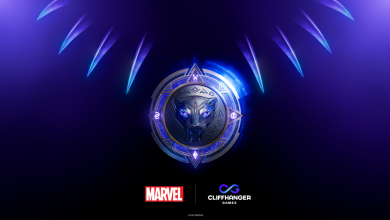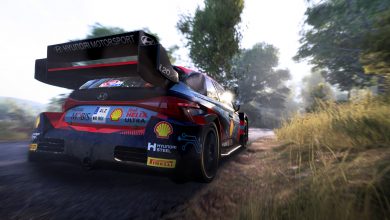![]() When I got to the show floor at Games Convention Asia for the first time, my eyes wandered around frantically trying to locate the Mirror’s Edge booth. No game on show there appealed to me as much as DICE’s fresh take on first-person action did. I forced my way past the FIFA 09 and Need For Speed Undercover kiosks and literally shoved other visitors out of the way to get to Mirror’s Edge. When I finally got there, Tom Farrer, the game’s producer, was there talking another journalist through the game. Then it was my turn. After a quick explanation of the controls, Tom restarted the level and handed over the DUALSHOCK 3 to me. From that point on, it was just Faith and I.
When I got to the show floor at Games Convention Asia for the first time, my eyes wandered around frantically trying to locate the Mirror’s Edge booth. No game on show there appealed to me as much as DICE’s fresh take on first-person action did. I forced my way past the FIFA 09 and Need For Speed Undercover kiosks and literally shoved other visitors out of the way to get to Mirror’s Edge. When I finally got there, Tom Farrer, the game’s producer, was there talking another journalist through the game. Then it was my turn. After a quick explanation of the controls, Tom restarted the level and handed over the DUALSHOCK 3 to me. From that point on, it was just Faith and I.
The level that was available in the GCA build is the same one that we’ve seen in countless screenshots, trailers and gameplay videos – the rooftop tutorial level. I myself had watched these videos countless times; I knew the route I had to take and I knew the parts where I was more likely to die. So I was feeling pretty good about myself when I watched the guy before me fail miserably and struggle to find his way across the rooftop. But nothing I had seen before had prepared me for the feeling I got when Faith took those first few steps at the top of the level. It just felt so real – the head bobbing, the weight shifting, the momentum picking up. I wasn’t quite ready for this.
[singlepic=141,400,430,center]
After a few strides, came time for the first jump. The game uses L1 to jump and L2 to slide below objects or trigger a parachute roll after a big jump. It’s all very simple and easy to pick up. I missed the jump the first couple of times; not because I didn’t hit the jump button, but because I hit it too early. The game requires you to extensively use the right analog stick to look around. It was only once I knew exactly where the ledge ended and made sure that I only jumped from the edge, that I made the jump safely. But triggering the jump is only part of it; landing it properly is just as important. You can either just have Faith land and come to a standstill and have her health drop a bit in the process, or you could hit L2 just as she hits the ground, which triggers a parachute roll.
You’re probably wondering why I’m going on and on about a jump. Its something that, in most games, you don’t even pay much attention to. It’s just another way to get from A to B. But whether or not you land a jump right in Mirror’s Edge affects how the rest of the level would potentially play out. If you just land to a standstill, it’s like starting from scratch. You’ll have to once again build up the lost momentum, without which, you may not make your next jump. That’s where the parachute roll comes in. Not only does it break your fall and preserve your health, but it also helps you carry your momentum forward. This is especially important in the game’s time trial mode, which I’ll get to later. The parachute roll is also wonderfully animated, but it can leave some people a little disoriented.
[singlepic=145,400,273,center]
While all of this is really cool and a lot of fun, it’s certainly not easy. There are two parts in this level that are particularly hard to pass and most people would probably die a couple of times here. The first is a beam that you need to walk across. The PS3 version of the final game will support SIXAXIS motion controls for such sections, similar to Uncharted, but the option wasn’t available in this build. But even using the analog sticks, it was quite a challenge and you could almost feel the slippery nature of the beam making it harder for you to stay on. After two disastrous attempts, each leading to Faith’s bone-crunching demise, I finally managed to pass it on my third attempt. A quick wall-run later I was at possibly the hardest part of the level – a short ramp leading into a big jump that ends with Faith clinging on to one of two pipes. There’s a lot that the player needs to get right to land this jump correctly. The first of these is momentum, without which you won’t even get to the pipes. The second is the use of the reaction time feature, which slows time down to allow you to line up the jump. The final aspect of this jump is the right positioning and direction, without which, you’ll miss the pipes and hit a brick wall instead. You’ll need to get each of these three aspects right to land this jump. I failed at this jump a couple of times. After watching the videos and laughing at numerous people, DICE staff members no less, fail at this jump, it was a truly humbling experience and extremely rewarding as well when I finally hit it.
I didn’t face too many problems getting through the rest of the level, but you know the moment you finish the level for the first time, that you didn’t do it the way it’s meant to be done. The first time you play Mirror’s Edge, there will be lots of failed jumps, collisions into fences and walls and mistimed slides. But it’s only once you get a hang of the controls, learn to time moves, and memorise the route that the true beauty of the game unfolds. Once you start stringing jumps together and build up speed and momentum, it’s like watching ballet, only a lot, lot cooler. I’ve been saying this to everyone ever since I played this game – I am yet to come across a game that will offer the kind of replay value that Mirror’s Edge will, and that’s the reason that the inclusion of the time trial is a masterstroke from the guys at DICE. Unlike racing games where your car can only go so fast on a fixed track layout, in Mirror’s Edge there are so many factors that go into how fast you complete a section. Which route do you take? Do you jump over a railing or slide under it? Do you land a jump flat or in a parachute roll? Each decision affects your momentum and your speed; some deliciously addictive time trials in the offing.
[singlepic=147,400,225,center]
Visually, Mirror’s Edge is a stunner. Its fresh art direction and new lighting engine can easily make you forget that the game actually runs on Unreal 3 – the home of brown, grey and chunky. Predominantly white, the colour scheme lends a sense of cleanliness to the environment, which goes perfectly with the city’s crime-free, nanny state persona. Interspersed in this whitewashed world are certain objects that stand out in primary colours. Not only do these take away the monotony of white, but also act as visual aides for the player. Several objects that the player can interact with, such as doors, ladders, beams, etc are coloured in one of 7 bright colours. With so much importance on momentum, these colourful objects serve as guides and are easy to pick out even at high speed. And don’t let the simple colours fool you, the environments in Mirror’s Edge are just as heavily textured and intricately detailed as you would expect from a game of this generation.
There was some light combat involved in this build, the kind that you could easily avoid if you wanted, but getting the better of the guards isn’t that hard. You can either perform a simple melee attack straight on, or, if you’re feeling creative, attack off a wall-run or back-flip. There’s even the option of disarming, which wasn’t as rewarding as the melee attacks, because all you’re required to do is hit triangle, which triggers a disarming animation. It all looks very cool, but you just don’t feel as involved.
[singlepic=153,400,225,center]
The level I played in Singapore is the same one that will be included in the demo when it hits PSN and Xbox LIVE. For those who’ve wished that Mirror’s Edge was made in the third-person perspective, give the game a chance. It is fiercely addictive and unlike like any first-person game you’ve ever played. There are so many new things DICE have done here – the crisp visual style, the body physics, the free-running gameplay. A game like Mirror’s Edge is a massive risk, and you can tell that some bold decisions were taken during its development. It certainly looks like the risk was worth it, and the reward hits shelves on November 11.
Join the discussion at the IndianVideoGamer Community forums
Don’t forget to check out IndianVideoGamer’ in-depth interview with the game’s producer Tom Farrer, where he talks about everything from the time trial mode, multiplayer, boss fights and working with the Unreal engine, to DLC, sequels, and possible ports to other platforms.



